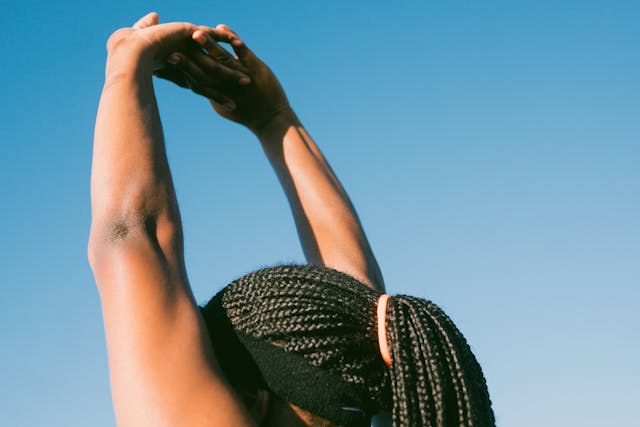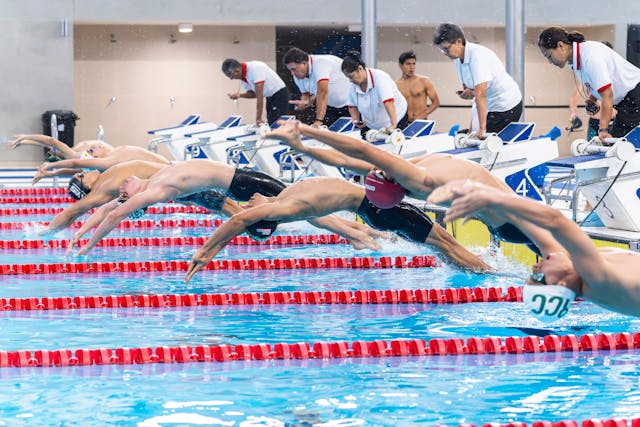Aging is a natural part of life, but staying physically active can make a world of difference in how we experience it. Physical fitness is not just for the young; seniors, too, can greatly benefit from regular exercise. In fact, staying active is one of the most effective ways to maintain independence, improve quality of life, and prevent chronic illnesses as we age.
Let’s explore how seniors can embrace physical fitness for a healthier, happier life.
Why Physical Fitness Matters for Seniors
As we grow older, our bodies naturally undergo changes. Muscle mass decreases, bone density diminishes, and metabolism slows down. However, these changes can be mitigated or even reversed with regular physical activity. Here are some key reasons why fitness is essential for seniors:
- Improved Cardiovascular Health: Regular exercise strengthens the heart and improves circulation, reducing the risk of heart disease and stroke.
- Enhanced Mobility and Flexibility: Stretching and strength exercises improve joint flexibility and muscle strength, making daily activities easier.
- Better Mental Health: Physical activity releases endorphins, which improve mood and reduce symptoms of depression and anxiety.
- Chronic Disease Prevention: Exercise helps manage or prevent conditions such as diabetes, arthritis, and osteoporosis.
- Improved Cognitive Function: Studies show that regular physical activity can boost memory and reduce the risk of dementia.

Best Exercises for Seniors
Not all exercises are created equal, especially for seniors. The focus should be on low-impact, safe, and effective workouts. Here are some top recommendations:
Walking:
- Simple and accessible, walking is one of the best exercises for seniors.
- Aim for at least 30 minutes of brisk walking most days of the week.
Strength Training:
- Use light weights or resistance bands to maintain muscle mass and bone density.
- Focus on major muscle groups with exercises like bicep curls, leg lifts, and squats.
Yoga:
- Yoga improves flexibility, balance, and mental well-being.
- Chair yoga is a great option for those with limited mobility.
Swimming:
- A low-impact exercise that’s easy on the joints.
- Great for cardiovascular health and overall strength.
- This gentle martial art promotes balance and relaxation.
- Ideal for preventing falls and improving posture.
Stretching:
- Daily stretching keeps muscles flexible and reduces the risk of injury.
- Focus on areas like the hamstrings, shoulders, and lower back.
Creating a Fitness Plan
Consistency is key when it comes to physical fitness for seniors. Here’s how to create a manageable and enjoyable fitness plan:
1. Start Slow:
- If you’re new to exercise, begin with short sessions and gradually increase duration and intensity.
- Listen to your body and rest when needed.
2. Set Realistic Goals:
- Define achievable objectives, such as walking 10,000 steps a day or doing strength training twice a week.
3. Mix It Up:
- Incorporate a variety of exercises to work different muscle groups and prevent boredom.
4. Make It Social:
- Join a fitness class or find a workout buddy to stay motivated.
- Community centers often offer senior-friendly exercise programs.
5. Track Your Progress:
- Use a fitness tracker or journal to monitor your activities and celebrate milestones.
Overcoming Common Barriers
Many seniors hesitate to start a fitness routine due to perceived barriers such as lack of motivation, fear of injury, or health concerns. Here’s how to overcome these challenges:
- Health Conditions: Consult your doctor before starting any new exercise program to ensure it’s safe for you.
- Fear of Injury: Begin with low-impact exercises and use proper form to minimize risks.
- Lack of Energy: Regular exercise can actually boost energy levels, so start small and build up gradually.
- Time Constraints: Incorporate short bouts of activity throughout the day, like taking the stairs or gardening.
The Role of Nutrition
Physical fitness and nutrition go hand in hand. Eating a balanced diet provides the energy and nutrients needed to support an active lifestyle. Seniors should focus on:
- Protein: Essential for muscle repair and maintenance. Include sources like lean meat, eggs, beans, and dairy.
- Calcium and Vitamin D: Crucial for bone health. Incorporate dairy products, leafy greens, and fortified foods.
- Hydration: Drink plenty of water to stay hydrated, especially during and after exercise.
- Whole Grains: Provide sustained energy. Choose options like oatmeal, brown rice, and whole-grain bread.
- Fruits and Vegetables: Packed with vitamins, minerals, and antioxidants that support overall health.
Fitness Safety Tips
Safety should always come first when engaging in physical activities. Keep these tips in mind:
Warm Up and Cool Down: Begin each session with a warm-up to prepare your muscles and end with a cool-down to prevent stiffness.
Wear Proper Shoes: Invest in supportive footwear to reduce the risk of falls.
Stay Hydrated: Drink water before, during, and after exercise.
Avoid Overexertion: Know your limits and stop if you feel pain or discomfort.
Exercise Indoors When Necessary: In extreme weather, opt for indoor activities to stay safe.

The Social Benefits of Fitness
Physical fitness for seniors isn’t just about improving physical health—it also enhances social well-being. Group fitness classes, walking clubs, and community events provide opportunities to connect with others, combat loneliness, and build a sense of belonging.
The Long-Term Benefits of Physical Fitness
The long-term benefits of staying physically active as a senior are profound. Regular exercise can:
- Extend Longevity: Active seniors tend to live longer, healthier lives.
- Reduce Healthcare Costs: Preventing chronic diseases and injuries leads to fewer medical expenses.
- Maintain Independence: Staying fit helps seniors perform daily activities without assistance.
Inspiring Fitness Stories
Many seniors have transformed their lives through physical fitness. Take my Uncle who is 75. He has been diligently doing a strength training workout regularly 4 times a week and has been able to retain muscle and flexibility to prevent age related injuries.
Or consider a family friend who started doing water aerobics at age 80 to improve her overall fitness. She began with 2 sessions a week and enjoyed it so much that now incorporates swimming 5 times a week into her schedule. Both are more active than ever and have inspired their friends and family to stay fit.
A great place to begin is at your local community fitness center with an appointment with a trainer so that you can discuss and review your goals and come up with a fitness plan that works for you.
Final Thoughts
Physical fitness for seniors is more than a goal—it’s a lifestyle that promotes healthy aging, independence, and joy. By incorporating regular exercise, eating a balanced diet, and staying motivated, seniors can unlock the countless benefits of an active life. Remember, it’s never too late to start. Whether you’re taking your first step or your hundredth, every move counts toward a healthier, happier you.



















Comments are closed.